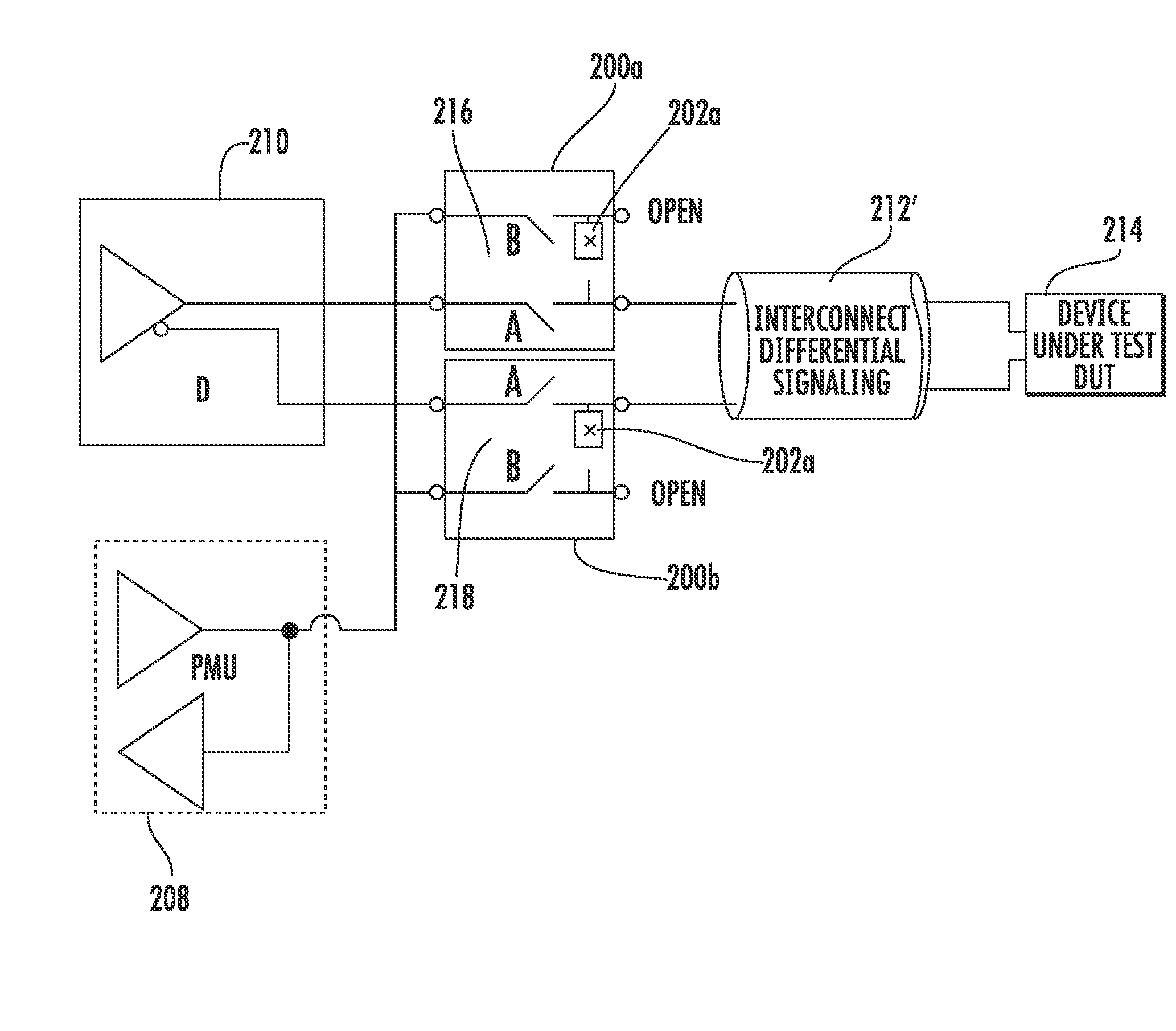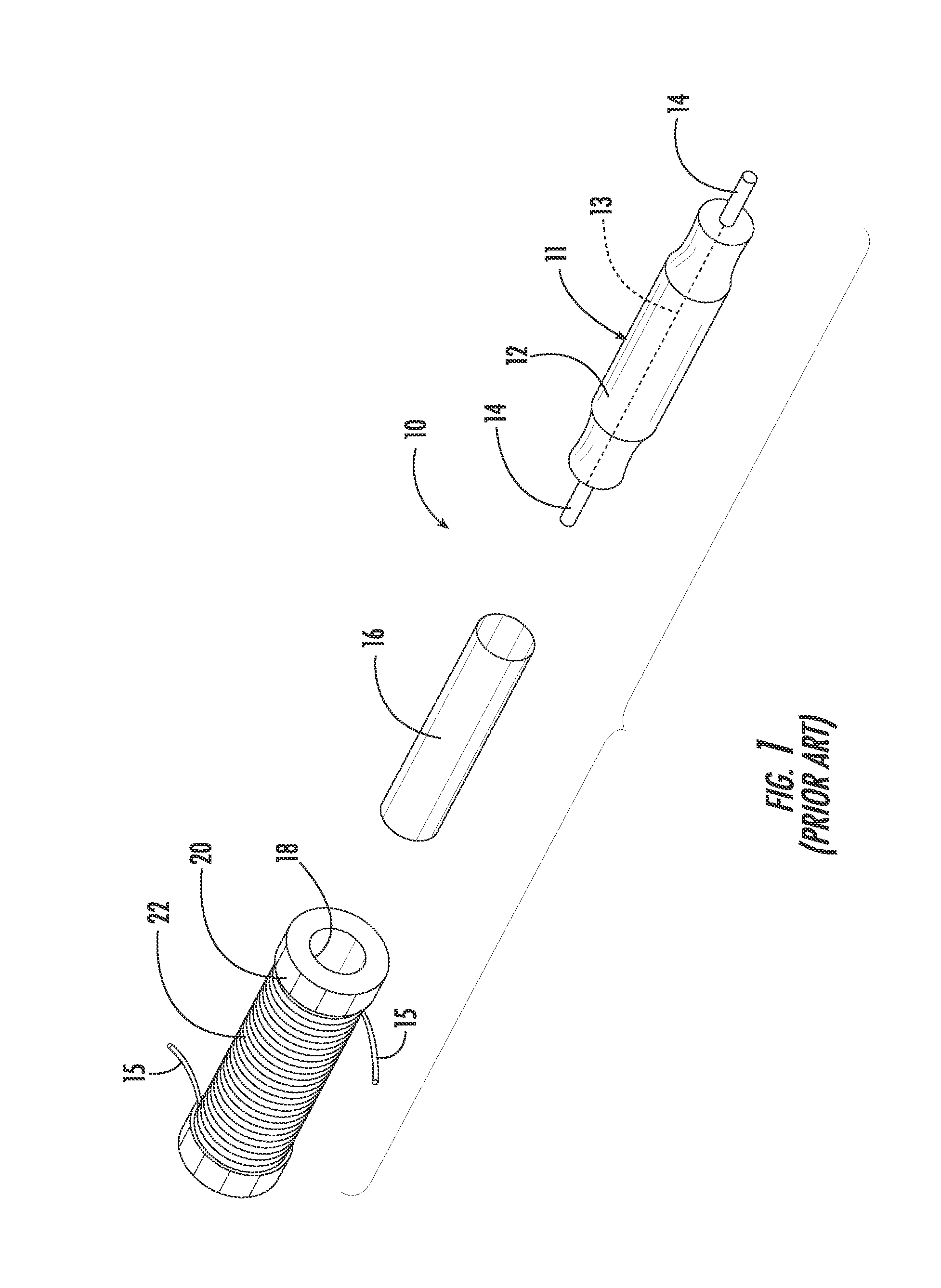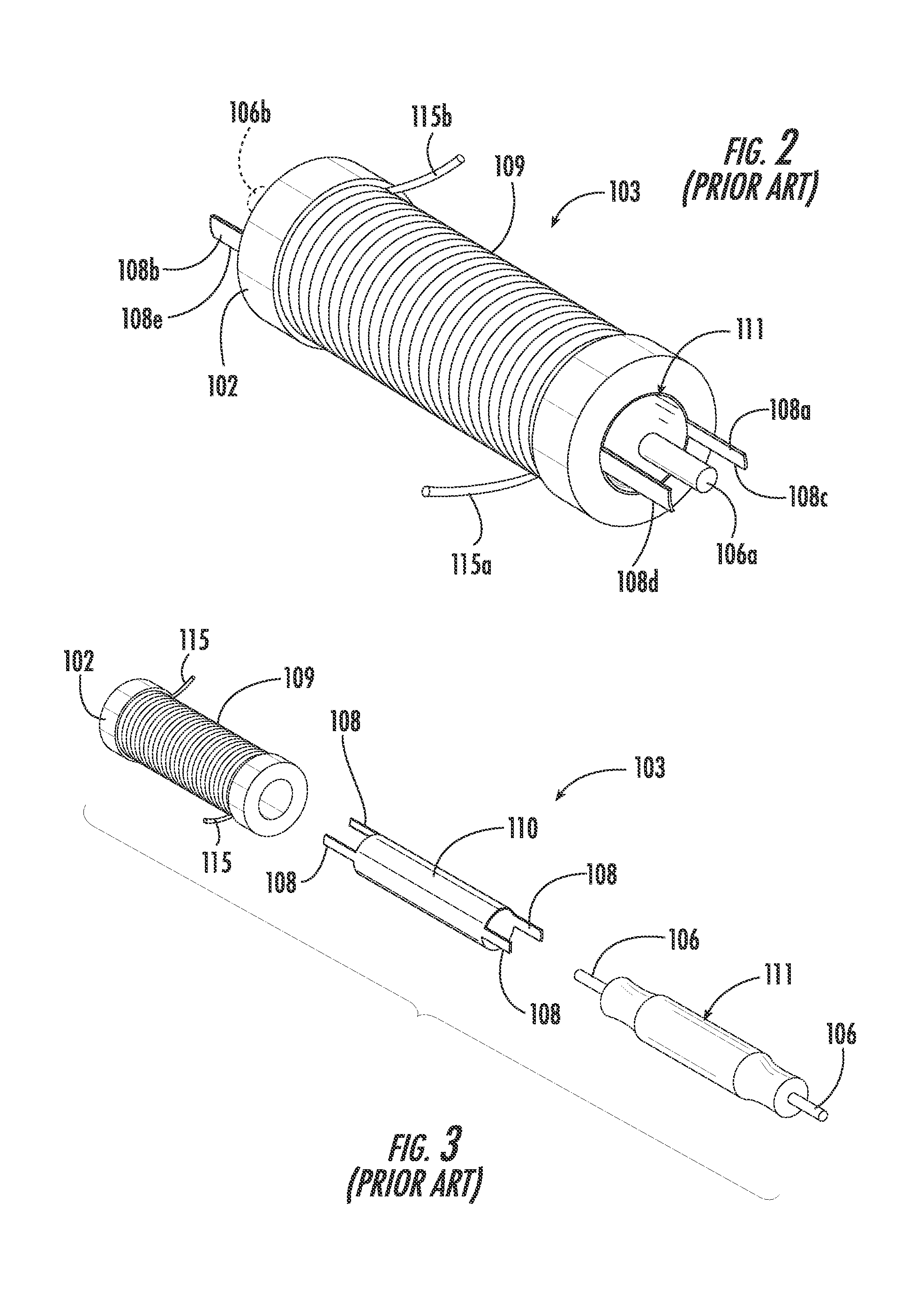Form c relay and package using same
a technology of relays and relays, applied in the field of switching devices, can solve the problems of increasing the complexity of the device with a higher cost, long, unprotected and vulnerable connection, and significant parasitic capacitance c to ground, and achieve the effect of minimizing the discontinuity of impedan
- Summary
- Abstract
- Description
- Claims
- Application Information
AI Technical Summary
Benefits of technology
Problems solved by technology
Method used
Image
Examples
Embodiment Construction
[0073]The improved Form C relay 200 of the present invention is shown in detail in connection with FIGS. 9-26 below. The relay of the present invention may be easily used for circuits, such as circuit 300 in FIG. 7 so that this circuit may easily operate at frequencies in the 18 GHz range and above to accommodate the testing of high-speed devices. The relay 200 of the present invention can enable such circuits to operate in the 18 GHz range and higher because RF performance is greatly improved by use of low pass filters, generally referred to as 202, while the high-frequency path is protected using the simulated co-axial signal protecting environment. Also, a DC signal to about 18 GHz on either channel in a dual channel environment, with less than 3 dB signal power loss, can be achieved in a circuit that employs the relay of the present invention. The relay 200 of the present invention is the first to use two filter elements, such as 202a and 202b as in FIG. 9, to mutually isolate t...
PUM
 Login to View More
Login to View More Abstract
Description
Claims
Application Information
 Login to View More
Login to View More - R&D
- Intellectual Property
- Life Sciences
- Materials
- Tech Scout
- Unparalleled Data Quality
- Higher Quality Content
- 60% Fewer Hallucinations
Browse by: Latest US Patents, China's latest patents, Technical Efficacy Thesaurus, Application Domain, Technology Topic, Popular Technical Reports.
© 2025 PatSnap. All rights reserved.Legal|Privacy policy|Modern Slavery Act Transparency Statement|Sitemap|About US| Contact US: help@patsnap.com



